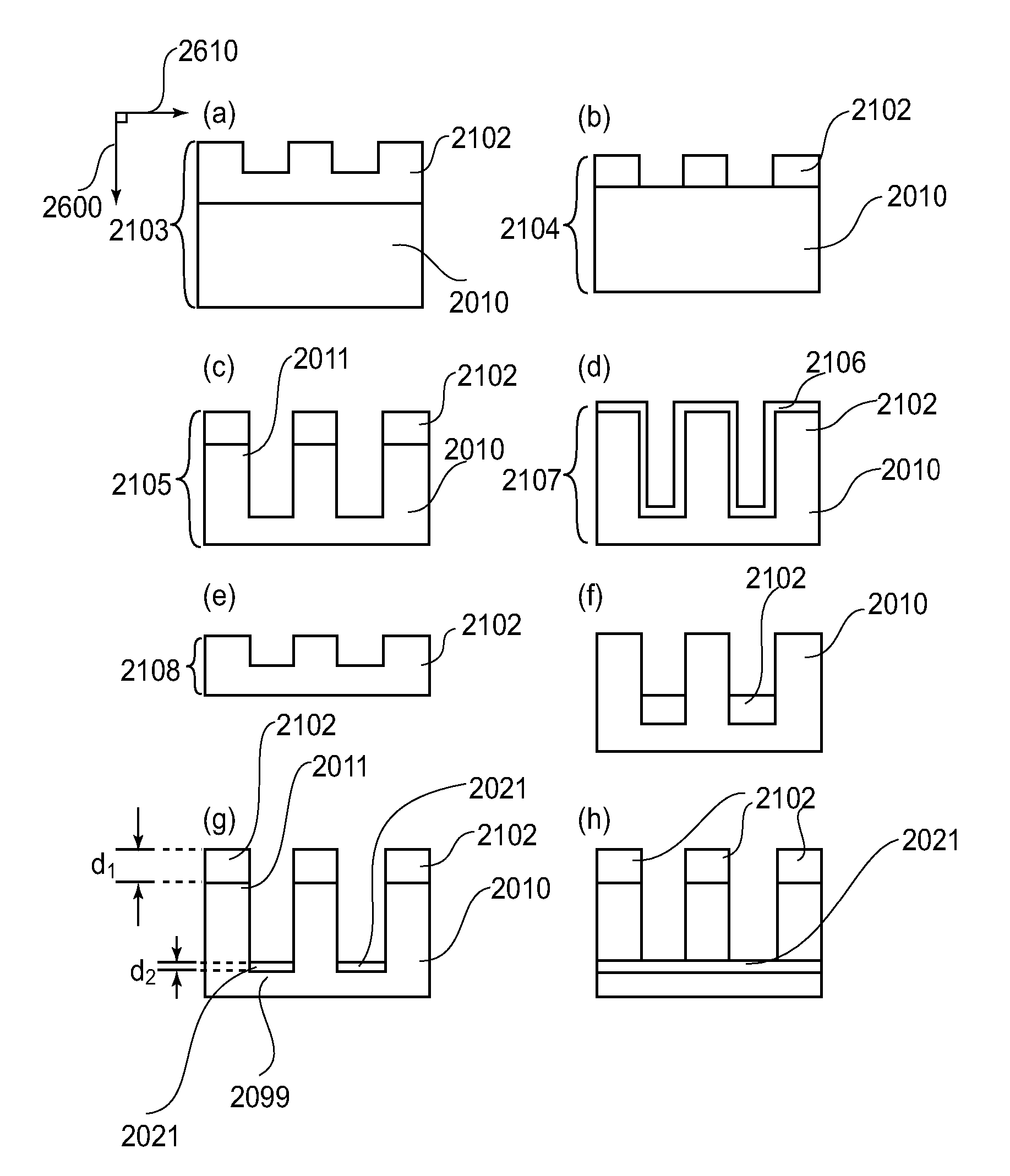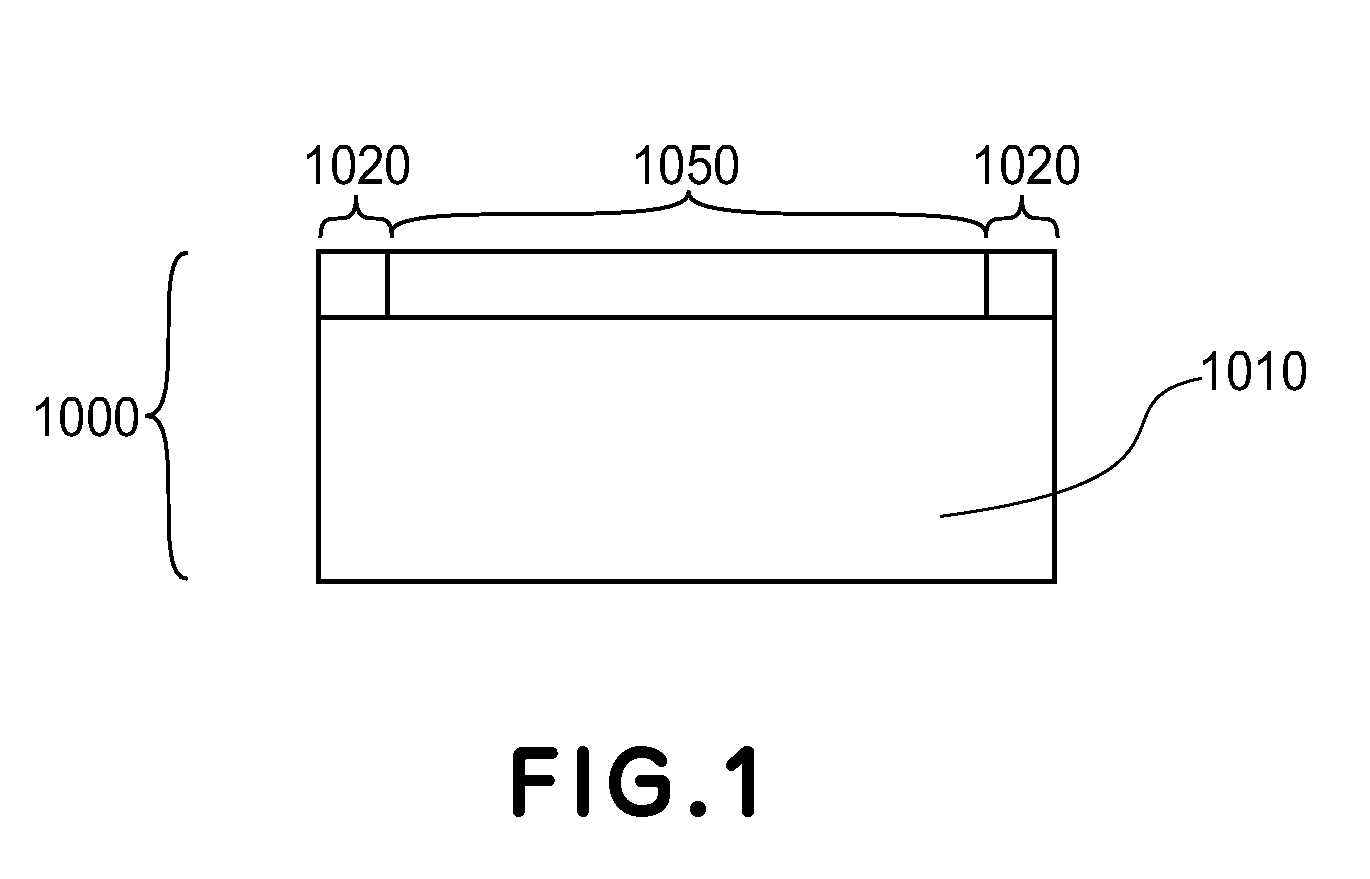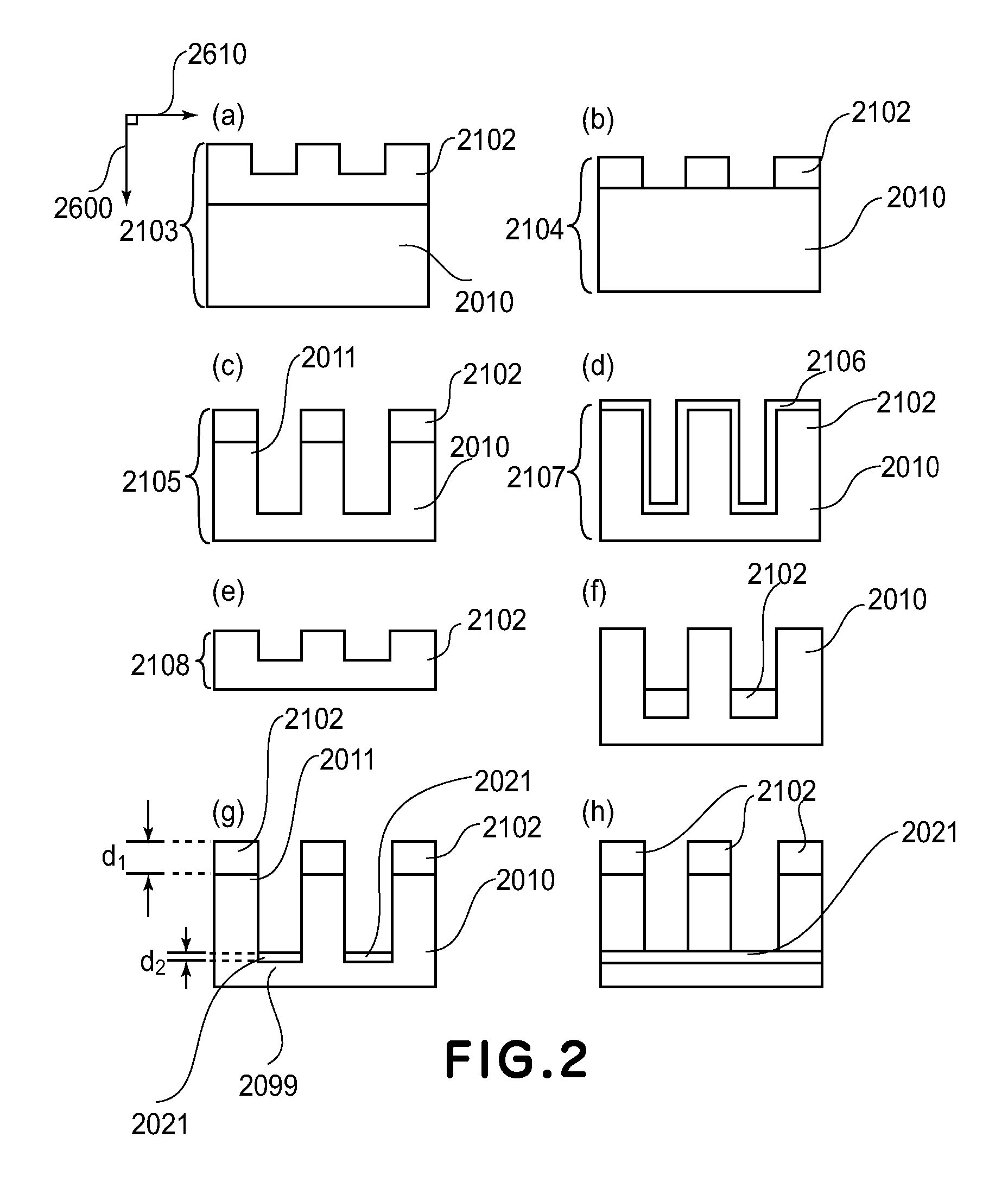Mold, imprint method, and process for producing chip
a technology of imprinting method and mold, which is applied in the field of mold, imprinting method and process for producing chips, can solve the problem that the alignment structure is not readily visible, and achieve the effect of high-quality alignment with work
- Summary
- Abstract
- Description
- Claims
- Application Information
AI Technical Summary
Benefits of technology
Problems solved by technology
Method used
Image
Examples
first embodiment
[0062]FIG. 1 is a schematic sectional view for illustrating an alignment mark provided in a mold (or a template).
[0063]Referring to FIG. 1, a mold 1000 includes a substrate (mold substrate) 1010, an alignment mark area 1020 in which an alignment mark is disposed, and a pattern area 1050 for transferring a pattern through imprint(ing). In the pattern area 1050, a pattern for imprint (e.g., a structure constituted by a recess and a projection) is actually formed, but is omitted from FIG. 1.
[0064]In this embodiment, the imprint pattern area 1050 is located at a central portion and two alignment mark areas 1020 are located at both sides of the imprint pattern area 1050, but a positional relationship therebetween is not particularly limited. For example, the alignment mark area 1020 may also be located inside the imprint pattern area 1050. Further, the number of the alignment mark areas 1020 may also be one or not less than three.
[0065]The alignment mark in this embodiment is utilized fo...
second embodiment
[0135]A mold according to Second Embodiment of the present invention will be described with reference to FIG. 2(g).
[0136]In the First Embodiment described above, FIG. 2(g) is the sectional view of the layer structure of the mold in the alignment mark area. However, in this embodiment, the layer structure shown in FIG. 2(g) is used without a distinction between the alignment mark area and the pattern area. This is because it is possible to appropriately determine, in some cases, whether or not a portion of an imprint pattern, having a recess and a projection, provided at a processing surface of the mold, is utilized as the alignment mark. More specifically, so long as the mold has features described below, the mold is embraced in the scope of the present invention irrespective of whether the features are provided in any area of the mold.
[0137]Referring to FIG. 2(g), the mold of this embodiment includes the substrate 2010 constituted by the first material, the plurality of recesses 20...
third embodiment
[0143]A mold according to this embodiment will be described with reference to FIG. 1. As shown in FIG. 1, the mold includes the imprint pattern area 1050 (in which a pattern of a recess and a projection is not shown) and the alignment mark area (in which an alignment mark is not shown). As described in the First Embodiment, the positional relationship between the respective areas and the number of the alignment mark area is not particularly limited.
[0144]The material constituting the alignment mark area is a material having a refractive index of not less than 1.7 and can be selected from, e.g., silicon nitride, titanium oxide, and aluminum oxide, described above. It is not necessary to form the alignment mark area only from the above-described material.
[0145]The imprint pattern area 1050 may be formed from the same material as described above or quartz (silica or fused silica).
[0146]By employing a constitution such as described above, e.g., even in the case where the processing surf...
PUM
| Property | Measurement | Unit |
|---|---|---|
| refractive index | aaaaa | aaaaa |
| refractive index | aaaaa | aaaaa |
| refractive index | aaaaa | aaaaa |
Abstract
Description
Claims
Application Information
 Login to View More
Login to View More - R&D
- Intellectual Property
- Life Sciences
- Materials
- Tech Scout
- Unparalleled Data Quality
- Higher Quality Content
- 60% Fewer Hallucinations
Browse by: Latest US Patents, China's latest patents, Technical Efficacy Thesaurus, Application Domain, Technology Topic, Popular Technical Reports.
© 2025 PatSnap. All rights reserved.Legal|Privacy policy|Modern Slavery Act Transparency Statement|Sitemap|About US| Contact US: help@patsnap.com



